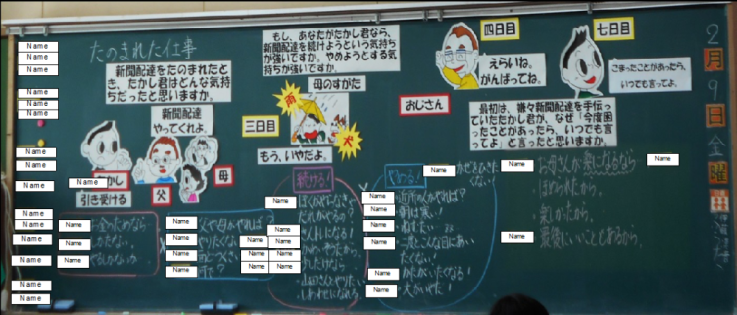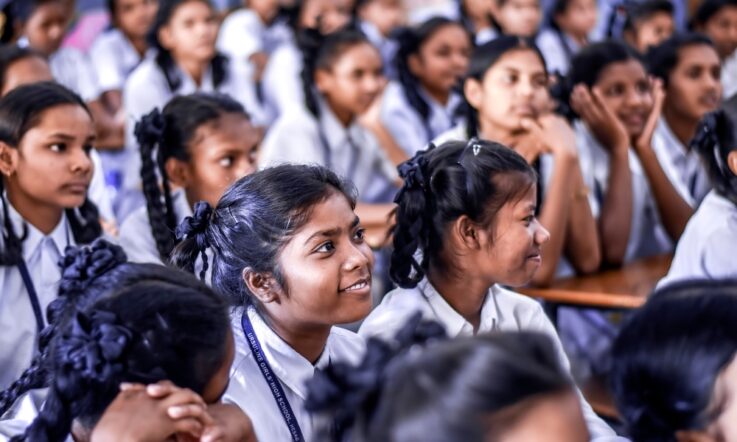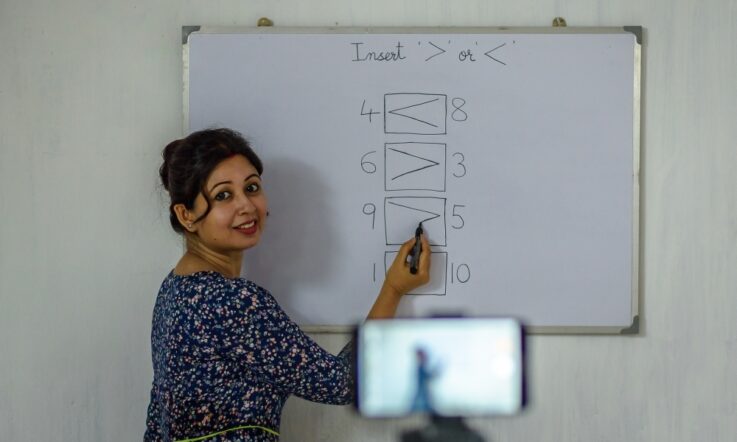‘Engagement isn’t just about flashy tools or elaborate activities. It’s about connection between the teacher and the learner, between the content and the real world, and among learners themselves.’ In this contribution, transformative education leader Ashok Pandey asks, ‘what does it take to truly capture the attention of learners and inspire them to participate wholeheartedly?’ and shares insights from a recent teacher leadership program.
What does it take to truly capture the attention of learners and inspire them to participate wholeheartedly? This question became the focal point of a teacher leadership program I recently conducted, organised by the Private Schools Principals’ Association and involving over 150 educators from diverse contexts across India.
Participants’ feedback, insights, and shared experiences revealed a tapestry of strategies and approaches that make classrooms engaging, not just for students but for teachers as well.
The teacher leadership program spanned 5 carefully curated modules:
- Teacher wellbeing and emotional intelligence
- Mentorship and coaching in education
- Innovative pedagogical approaches
- Technology integration in education
- Teacher leadership in a global context
Each module incorporated reflective exercises, interactive discussions, and practical assignments. Videos, online resources, group activities, games, and quizzes were discussed to provoke thought and spark discussions. Feedback was collected through surveys, group reflections, and one-on-one interactions, enabling identification of recurring themes about what engages learners and educators alike.
Key findings on classroom engagement
Through the lens of educators’ feedback, the following themes emerged as critical to fostering engagement in the classroom:
Collaborative learning
Participants consistently emphasised the power of collaboration. Whether through group projects, peer discussions, or team-based problem-solving activities that encouraged cooperation and led to deeper learning and greater enthusiasm. Grounded in social constructivism, this approach builds knowledge through interaction. As one participant noted, ‘When students work together, they not only learn from each other but also feel more connected and motivated.’
Real-world applications
Educators highlighted the value of connecting lessons to real-life scenarios. Using topics such as Global Citizenship Education and Climate Education, participants explored how these themes could bring relevance and urgency to classroom discussions. Such topics helped bridge abstract ideas with pressing global challenges. One teacher shared, ‘When students see how their lessons apply to the real world, their interest and engagement soar.’
Flipped classroom success
One of the most applauded strategies was the flipped classroom model. Participants prepared by engaging with curated videos, including Make Stress Your Friend by Kelly McGonigal and Al Gore’s compelling message on climate change. These videos sparked meaningful pre-session reflections and set the stage for deep, nuanced classroom discussions. Supported by cognitive load theory, this approach reduces in-class cognitive overload by shifting content delivery to pre-class activities, leading to richer in-class participation and a deeper understanding of complex issues.
Surprises, awe, and mystery
A fascinating insight from the feedback was the power of surprises. Teachers shared how creating moments of awe and mystery could invigorate lessons and capture students’ curiosity. Techniques like gamification, storytelling, and treating lessons differently every time were cited as ways to keep students intrigued and invested in learning. One educator remarked, ‘Adding elements of surprise keeps students on their toes and eager to learn.’
Leveraging technology and AI
Technology emerged as a key enabler of engagement, especially through Artificial Intelligence tools. AI has the potential to not only personalise the learning experience but also simplifies tasks for educators, making them more efficient and relevant. As Soumya Taneja, Head of Junior and Middle School, Summer Fields School, Gurugram, reflected:
‘The program transformed my understanding of innovative pedagogies, particularly the integration of AI in education. It showed me how technology can make teaching smarter while ensuring educators remain relevant by integrating rather than depending on it. The emphasis on observing and engaging every learner in the classroom underscored the power of inclusivity as a pedagogy.’
Success and celebration
Celebrating small wins and fostering a positive environment was another surprising takeaway. This strategy not only kept students motivated but also contributed to a joyful learning atmosphere. One participant noted, ‘Celebrate success – big or small – because it keeps the class motivated and engaged.’
Hooks and formative assessments
Feedback from the participants underscored the importance of starting lessons with a strong hook – something to pique students’ interest before diving into the topic. This could be an intriguing question, a surprising fact, or a short video. For example, a quote from Mary Anne Radmacher, ‘To be able to give, one must first be full,’ served as a powerful hook to connect with the theme of wellbeing and emotional intelligence. Embedding informal formative assessments throughout the lesson was another successful strategy shared by program participants that kept students actively engaged while allowing them to gauge understanding in real-time.
Lakshmi Chetty, Principal, Sadhana Schools, Andhra Pradesh, also shared several strategies. Pre-reading with crosswords and quizzes. These made learning interactive and seamless in her school. This strategy also added an element of surprise. Breakout rooms. These smaller group settings fostered coordination and inclusion, promoting in-depth research and discussion. Hooks and surprises. Techniques to hook learners and introduce surprises made classrooms lively and engaging. Lifelong learning impact. Lakshmi highlighted an unforgettable learning experience about mangrove forests a demo class incorporating pre-class activities, presentations, engagement, and discussions.
What does this all mean for educators?
- Engagement isn’t just about flashy tools or elaborate activities. It’s about connection between the teacher and the learner, between the content and the real world, and among learners themselves. Educators must embrace flexibility, experiment with new approaches, and cultivate emotional intelligence to create inclusive and stimulating learning environments.
- Engagement is the lifeblood of a thriving classroom, requiring a teacher’s creativity, empathy, and commitment to continuous learning. The feedback from our teacher leadership program underscores that the most engaging classrooms are those where students feel seen, heard, and challenged in ways that inspire them to grow.
- These phenomenological insights reveal that the essence of engagement lies in understanding and addressing the individual experiences of learners. By doing so, we foster an atmosphere where learning is not just an obligation but a joyous and enriching journey.
- Educators who continuously experiment with new approaches, leverage technology thoughtfully, and cultivate emotional intelligence will find their classrooms becoming vibrant spaces of discovery and connection.
- In adopting these strategies, educators can ensure that their teaching methods resonate deeply with their students, creating a lasting impact that goes beyond the classroom walls.
Addressing challenges and practical solutions
While these strategies offer significant potential, educators may encounter challenges.
Resistance to technology. Teachers unfamiliar with AI or gamification may hesitate to adopt them. Providing training and showcasing success stories can ease this transition.
Classroom dynamics. Collaborative learning and inclusivity can be challenging in large or diverse classrooms. Strategies like small group activities or peer mentorship can help.
Time constraints. Flipped classrooms and real-world applications may require extra preparation. Schools could support educators with curated resources and planning templates. Application of AI tools can also free up significant time for the teachers.
With your colleagues, discuss the strategies of classroom engagement described in this article. How can you design activities drawing from Ashok Pandey’s suggestions?
The author says, ‘educators who continuously experiment with new approaches, leverage technology thoughtfully, and cultivate emotional intelligence will find their classrooms becoming vibrant spaces of discovery and connection’. How frequently do you introduce new techniques in your classroom? What are some of the challenges with experimenting?



